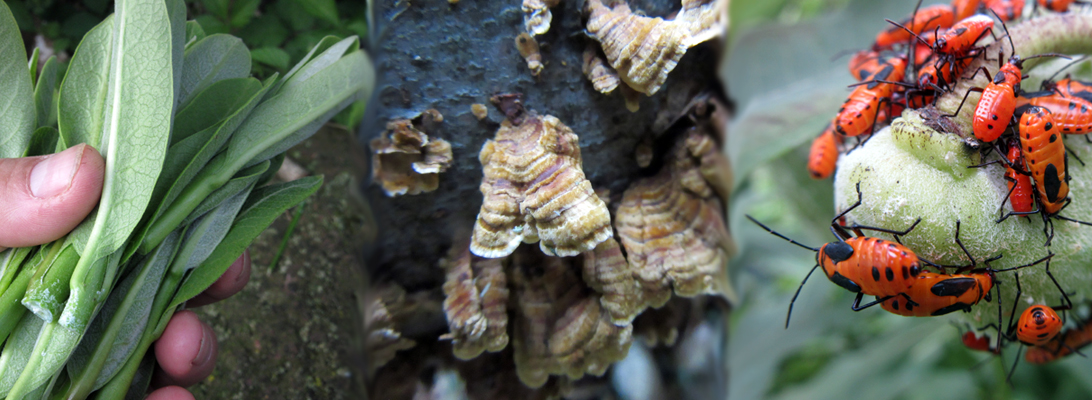It has once again been a good while since I posted anything. My wife and son and I just moved into a new apartment across town from where we had been living, and I have been sick, off and on, for the last month. I haven’t been foraging much, but have been enjoying using dried stinging nettles (Urtica dioica), garlic mustard (Alliaria petiolata), and raspberry (Rubus Spp.) leaves as tea or in cooked dishes. I wouldn’t usually use dried greens this much this early in the season, but when I can’t get out, I have to go with what I have. One thing I have foraged recently is crabapples.

On Thanksgiving (don’t get me started on this holiday) we all went to the park and picked a small pile of tiny crabapples from a tree I have had my eye on for months, before heading over to my parents house for diner. It was easy picking, despite a lot of the good low hanging fruit having already disappeared.
As a side note, other than the occasional elderly person picking a few raspberries, the only people I ever see foraging at the park are Asian and Amish families. It is not unusual to see families from either group taking a break from fishing at the pond, to go pick some mulberries or gather black walnuts. With that in mind, I wasn’t surprised to see an Asian family picking crabapples, but what I was surprised by was the quantity that they were harvesting. I am not used to seeing people that skilled and dedicated to harvesting wild plants around here. They had one enormous basket completely full, and were starting on the next. Fortunately for me, there are plenty of crabapple trees scattered around the park.
So anyway, the next day my son and I made applesauce for the 1st time, while my wife was at work. We took the stems off and sorted out any really bad ones. Then we washed them and boiled them whole for about 40 minutes. Apple seeds are somewhat toxic, but according to Steve Brill, boiling them renders them safe. This makes tiny crabapples like we picked super efficient for applesauce, since you can just boil them whole. Once they had cooled for a little while, we drained them and mashed them through a strainer with a large spoon. This left us with both apple juice and apple sauce, both of which were fairly tart, but tasted great with a little sugar added.
Thanks for reading, I hope to do more book reviews over the winter.
Nate
* My photos and text are meant to inspire you and help you learn to recognize new plants (and occasionally mushrooms and other woodland creatures), but they are not meant to be used to identify these species by themselves. I try to always reference where I get my information, but for more recommendations check out my “resources” page.
